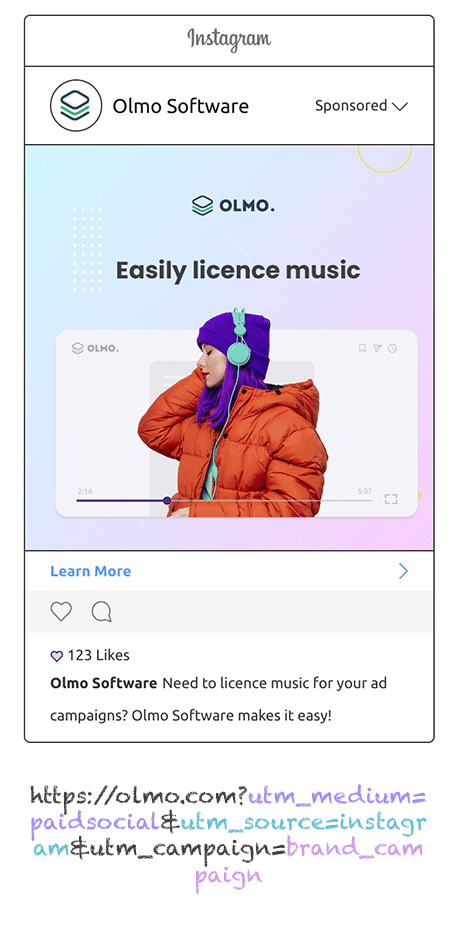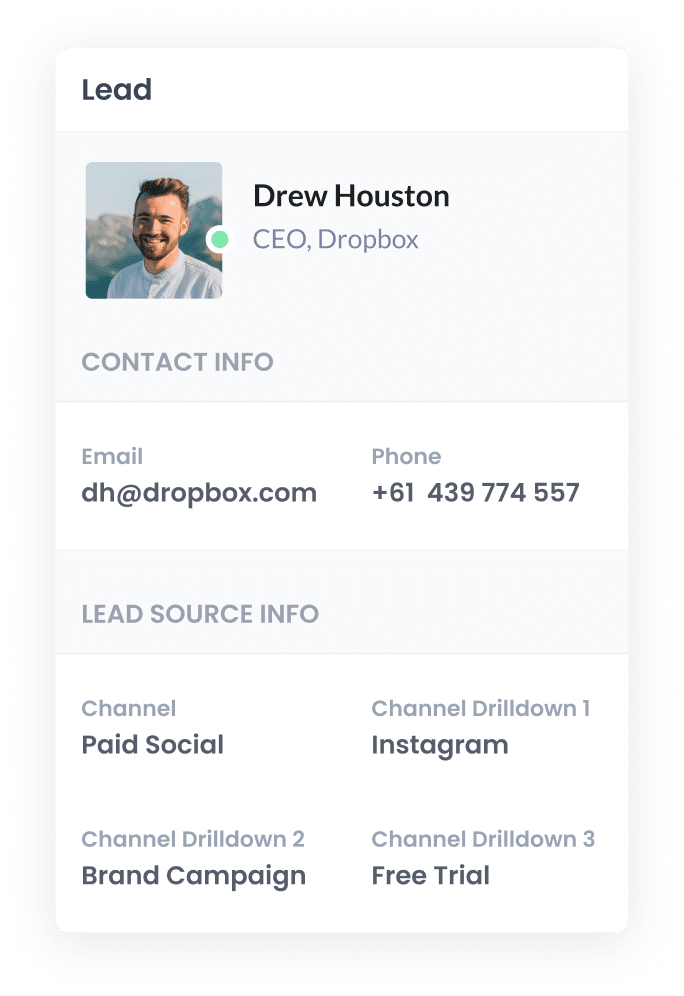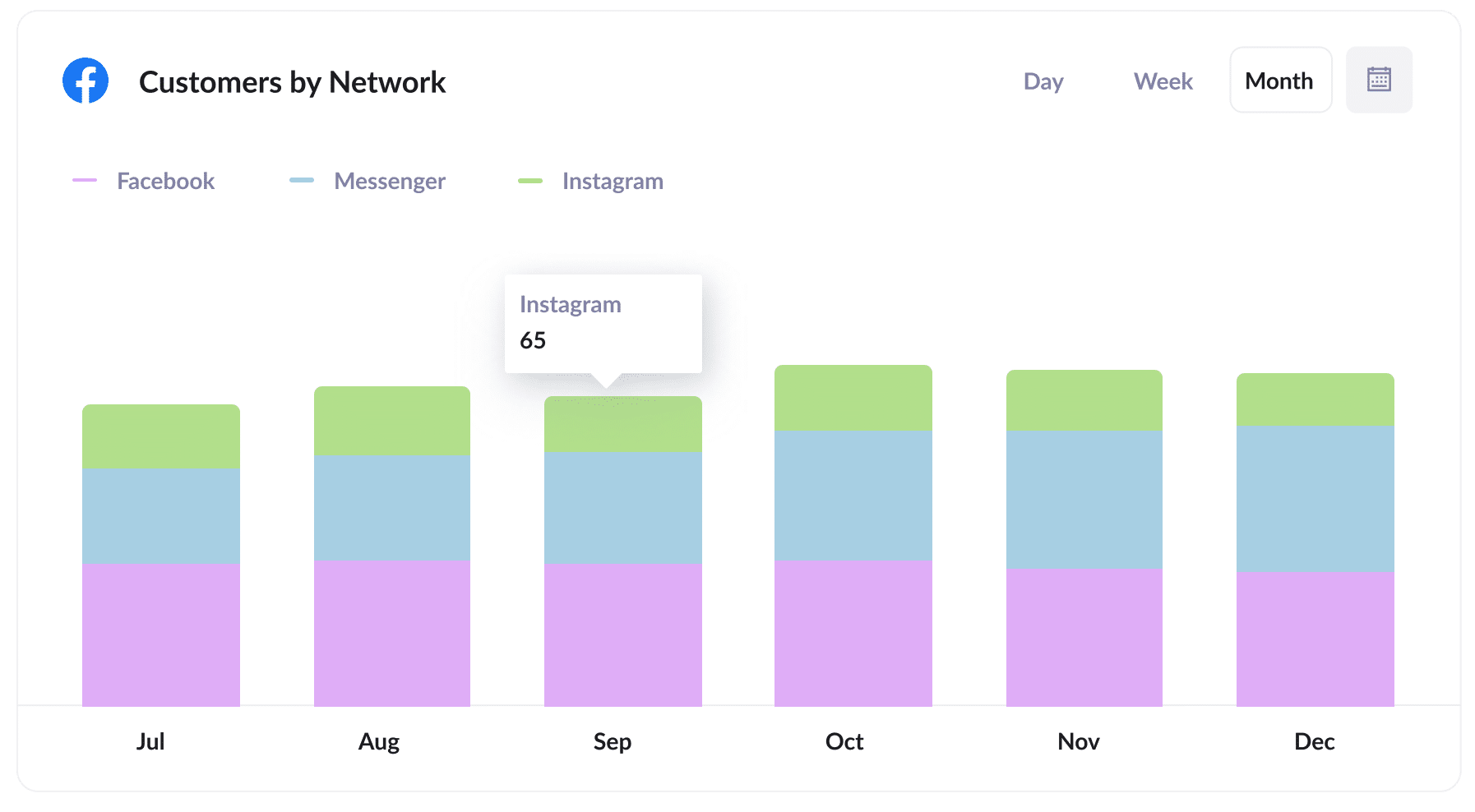How to easily track Instagram Ads in ActiveCampaign
Want to know how many leads and customers you get from your Instagram Ads? Read on to learn how to easily do it in ActiveCampaign.

Tools like Google Analytics are fantastic for figuring out the number of people who visit your website through your ad campaigns, like Instagram Ads.
However, if you're interested in truly measuring the return on investment (ROI) of your Instagram Ads, it's crucial to monitor the quantity of leads and customers they bring in, rather than just the number of website visitors.
In this article, we will guide you through how to use a tool called Attributer to understand the number of leads and customers that result from your Instagram Ads. And the best part? You can achieve this in just 4 simple steps!
4 steps to track Instagram Ads in ActiveCampaign
Tracking how many leads and customers you get from Instagram Ads in ActiveCampaign is actually really simple to do by following these 4 steps:
1. Add UTM parameters to your Instagram Ads

The initial step is to include UTM parameters in your Instagram Ads.
Unfamiliar with UTM parameters? In simple terms, they're additional bits of text attached to the end of the URL you share when directing individuals from your campaigns to your website.
For instance, if the webpage you're directing someone to is attributer.io/integrations/activecampaign, your URL (with UTM parameters) could resemble something like this:
attributer.io/integrations/activecampaign?utm_medium=paidsocial&utm_source=instagram&utm_campaign=brand-campaign
Now, you can structure UTM parameters however you like, but best practice for Instagram Ads is like this:
- UTM Medium = Paid social
- UTM Source = Instagram
- UTM Campaign = The name of your campaign
- UTM Term = The name of the ad set the ad belongs to
- UTM Content = The specific ad
Tagging URLs with UTM parameters is easy and there are free tools available on the web which can help you do it.
2. Install Attributer and add some hidden fields

The next step is to install Attributer on your website.
We'll send you a small piece of code to add to your website (instructions on how to add it can be found here) when you sign up for a 14-day free trial.
After you've added the code to your site, you need to include a number of hidden fields to your forms, including:
- Channel
- Channel Drilldown 1
- Channel Drilldown 2
- Channel Drilldown 3
- Channel Drilldown 4
Attributer works with dozens of form builders (including ActiveCampaign forms, Gravity Forms, Webflow Forms, Typeform and more). Depending on which form builder you use, it's usually very easy to add hidden fields - step-by-step instructions for many of form builders are here.
3. Attributer transfers Instagram Ads data into hidden fields

Once everything is set in motion, Attributer starts to monitor the sources of your website visitors, including those who arrived via your Instagram Ads.
Subsequently, it sorts each visitor into specific channels (such as Paid Social, Paid Search, Organic Search, etc.) and stores this data in a cookie within the visitor's web browser.
Once a visitor fills out a form on your website, Attributer will input the details about their origin into hidden fields.
4. Instagram Ads data is sent to ActiveCampaign

The final step: When a visitor fills out a form on your website, the lead source information is captured alongside details like the lead's name, email, and more, using your form tool. All of this gathered data can then be transmitted to ActiveCampaign.
Once the information is in ActiveCampaign, you can use it to:
- Generate reports that provide insights into the number of leads coming from your Instagram Ads, how many of these leads turned into customers, the total revenue generated, and more.
- Customize your sales approach when you reach out to these new leads. For instance, if their source was an Instagram ad highlighting a specific product or service, you can directly address this in your emails or conversations.
What data gets captured in ActiveCampaign?
Each time a form is submitted on your website, Attributer will pass through the following information:
1. Marketing channel data
Attributer will provide information about how the lead reached your website.
Imagine this situation: you're a marketer employed by a fencing company, and your current focus is on running Instagram advertisements to spotlight your new line of sturdy fencing.
If someone was to click on one of these ads and then complete a form on your website, the following information would be transmitted (based on the UTM parameters linked to your ads):
- Channel: Paid Social
- Channel Drilldown 1: Instagram
- Channel Drilldown 2: Sturdy Fencing Campaign (or the specific campaign name)
- Channel Drilldown 3: Sturdy Ad (or whichever ad content they clicked on)
2. Landing page data
Attributer also sends information about the initial landing page (for example, strongfence.com/blog/best-fence-types) and its associated landing page category (/blog).
This means you can monitor the number of leads coming from various content categories on your website, like your blog. This enables you to see which specific blog posts are driving the most leads and revenue.
What is Attributer and why use it?
Attributer is a small code snippet that you place on your website.
When someone visits your website, Attributer looks at where they came from and categorizes them into different groups so you can see if they came from social media ads, search results, or other places. This information is saved as a cookie in the visitor's browser.
If that individual completes a form on your website, Attributer retrieves the data saved in the cookie and inserts this information into hidden fields within the form. All this information can then be sent to your other backend tools connected to your forms, such as your CRM, email marketing tool, billing platform, and analytics tools.
Here's why Attributer is really good for tracking Instagram Ads in ActiveCampaign:
- Captures other attribution information - As well as capturing the source of leads from your Instagram Ads, Attributer also captures information on leads who arrive on your site through other channels like Organic Search, Organic Social, Referral, or Direct. This means you can see where ALL your leads and customers are coming from, not just those from your Instagram Ads.
- Remembers the data - Unlike other tools, Attributer stores the UTM parameters in a cookie in the user’s browser, meaning that it doesn't matter which page the user completes a form on, the UTM parameters will always be passed through and you’ll have more accurate data on how many leads and customers you’re getting from your Instagram Ads.
- Cleans the data - Attributer was built to expect inconsistencies in UTM usage, such as using utm_source=instagram in some campaigns and utm_source=instagram.com in others. It would assign these leads to the correct channel (Paid Social in this case) regardless of these inconsistencies, again ensuring you have more accurate data.
3 reports you can run when you track your Instagram Ads in ActiveCampaign
Before founding Attributer, I led marketing and analytics teams at several companies for more than 15 years.
Over the years, I've probably spent more than $1 million on ads on Instagram and a variety of other social networks. I've also run hundreds of reports to understand which campaigns were working best.
Here are a couple of the reports that I found the most useful:
1. Leads by channel

The chart above shows you how many new potential customers you're getting every month. It groups them based on where they first found out about you. This big picture helps you know where most of your customers come from and where you should focus to get even more customers.
Imagine this: If the chart tells you that lots of customers find you through regular searching (like on Google), but you're spending a ton of money on ads on Instagram, it might be a good idea to think about changing your plan.
2. Customers by network

If you're putting up ads on Instagram, you most likely have ads on Facebook and other places too.
If this sounds like what you're doing, then this report is pretty handy. It lets you know how many customers you're getting from each of the places you're showing ads. This info is important because it helps you decide where to use your money smartly to get the best outcomes.
3. Revenue by campaign

This chart shows how much profit you've earned from the various campaigns you're running on Instagram.
It's valuable because it shows you which campaigns are making more money than they're spending. This helps you choose where to invest your budget to increase your earnings.
Wrap up
If you've been wanting an easy way to keep track of the number of leads and customers you're getting from your Instagram Ads, Attributer is an easy way to do it.
It allows you to know exactly where each lead comes from, like the specific campaign, ad set, or ad they clicked on.
And guess what? It's free to begin using and takes only about 10 minutes to set up.
So start a free 14-day trial of Attributer today to see how it can help you!
Get Started For Free
Start your 14-day free trial of Attributer today!

About the Author
Aaron Beashel is the founder of Attributer and has over 15 years of experience in marketing & analytics. He is a recognized expert in the subject and has written articles for leading websites such as Hubspot, Zapier, Search Engine Journal, Buffer, Unbounce & more. Learn more about Aaron here.
